



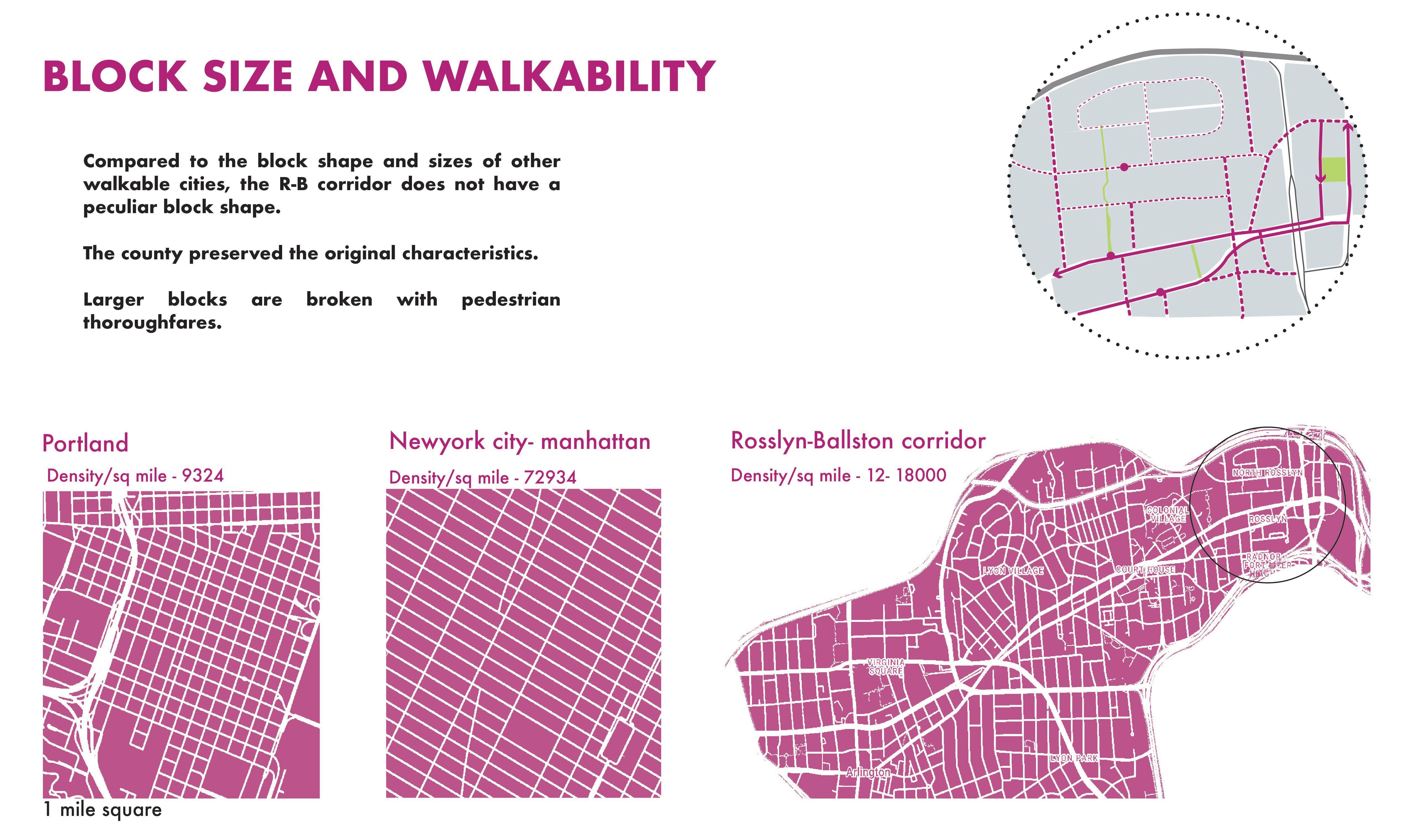
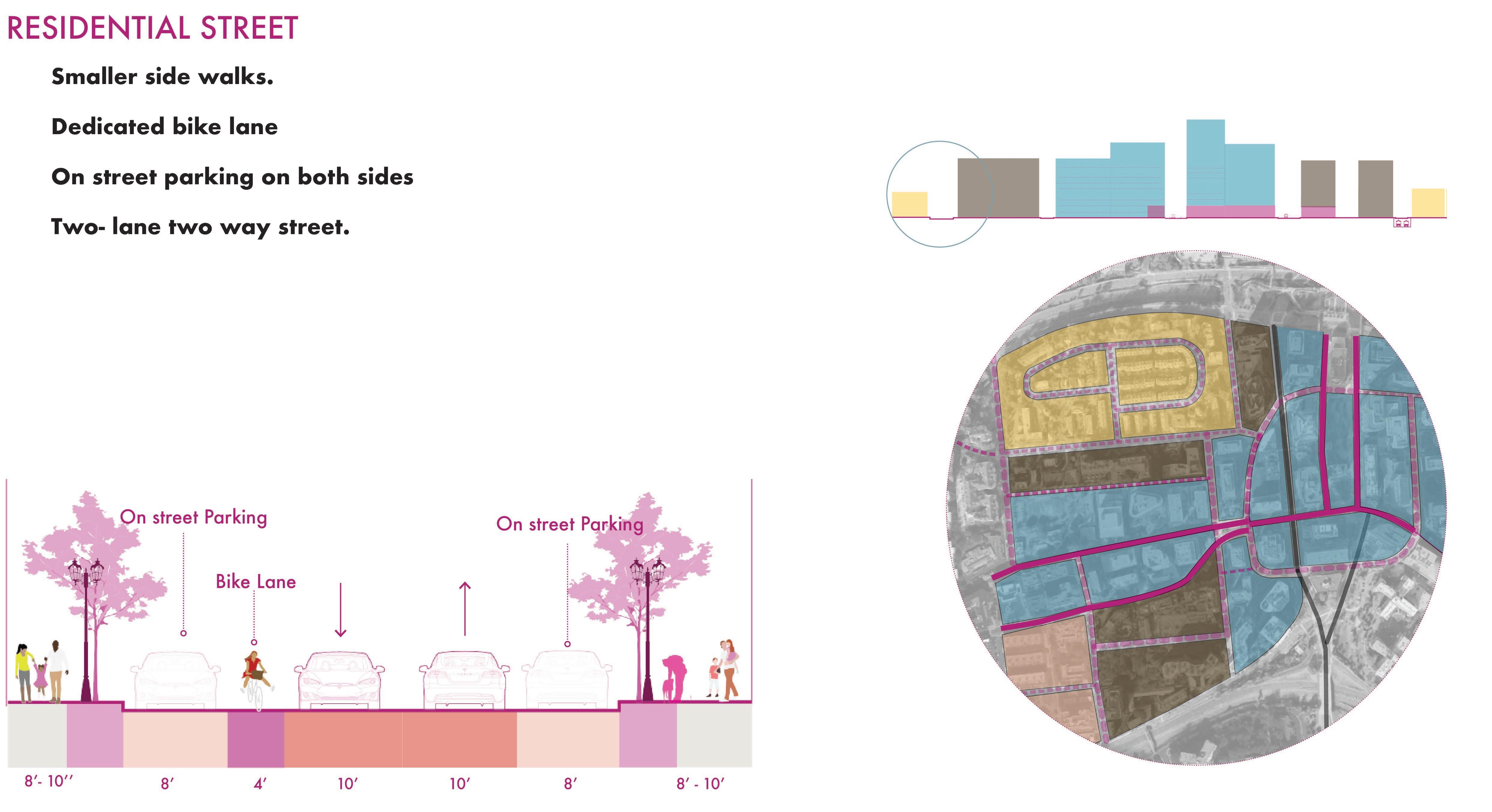
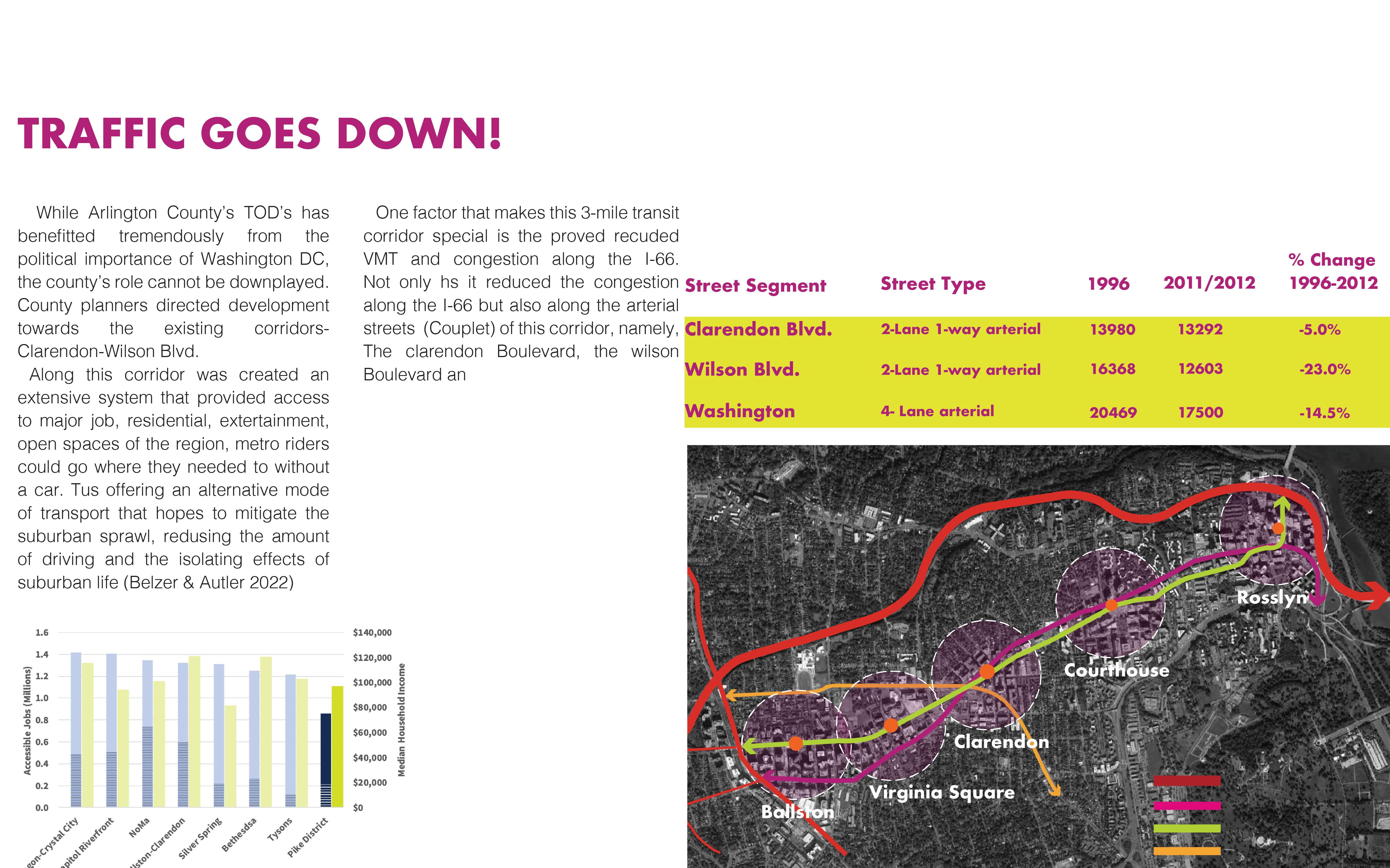
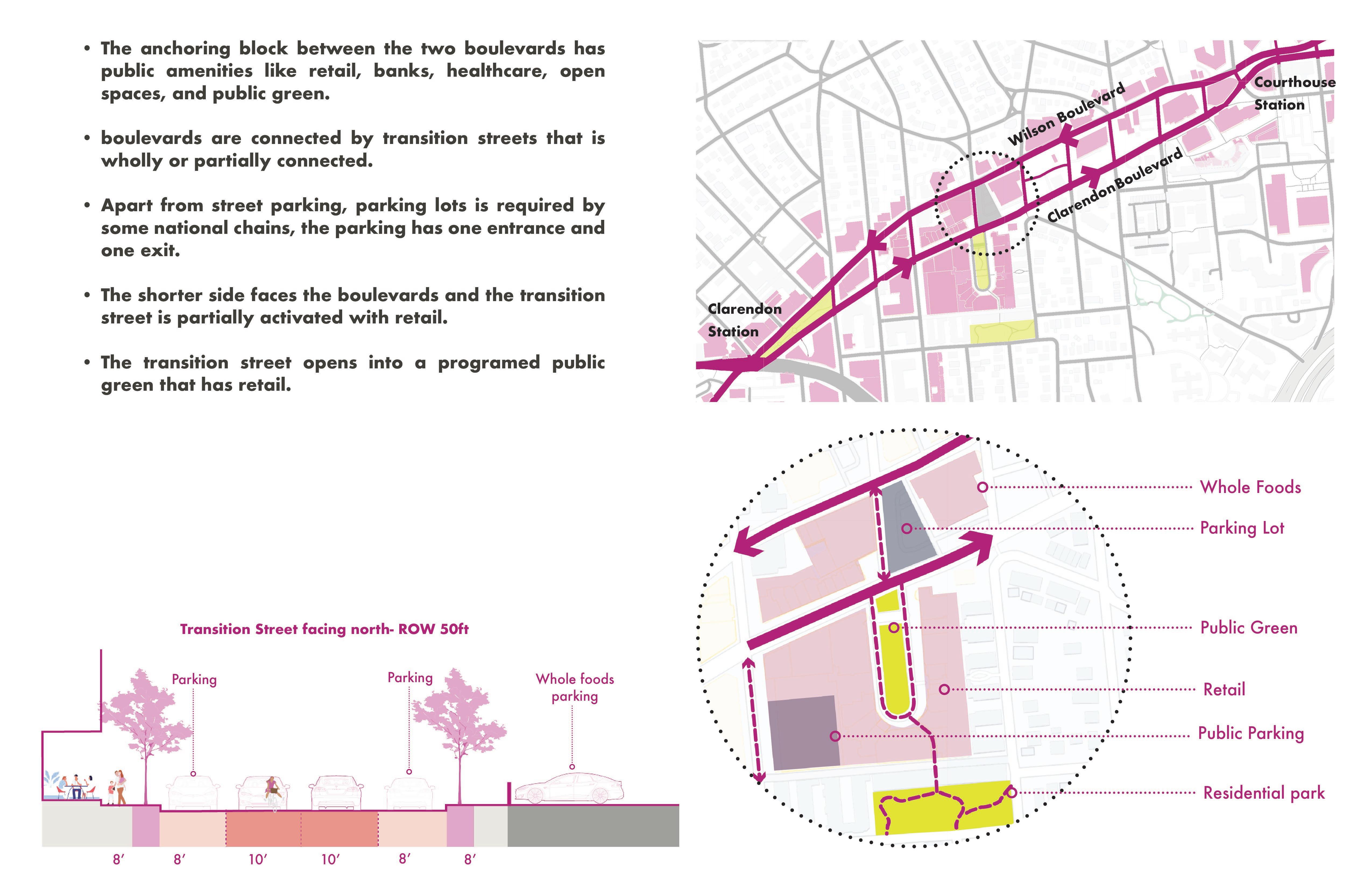


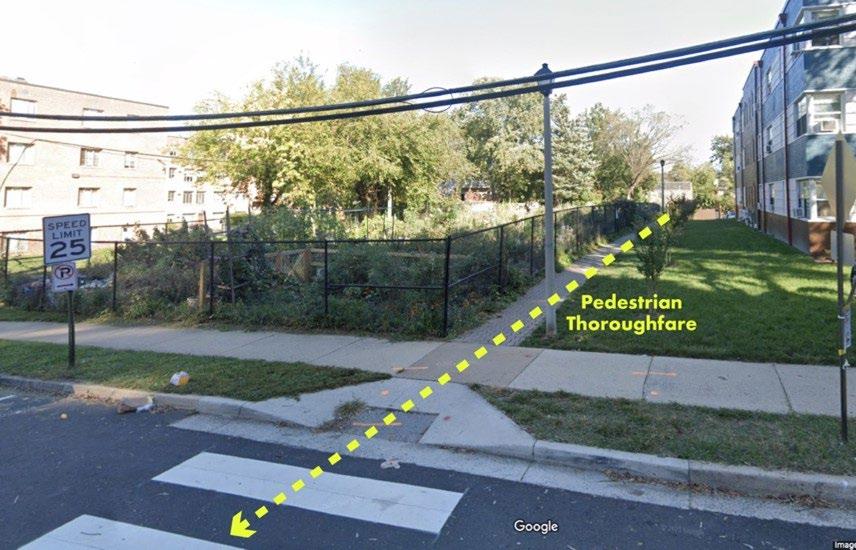

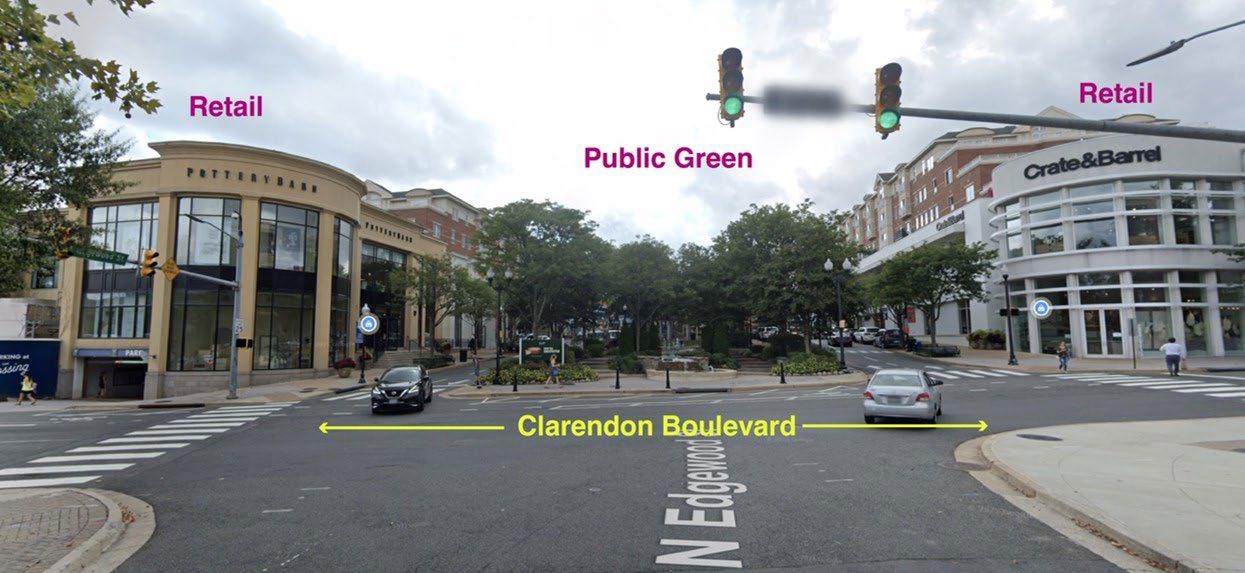

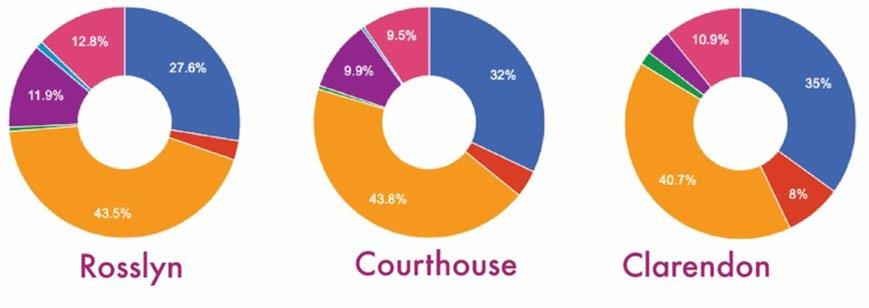
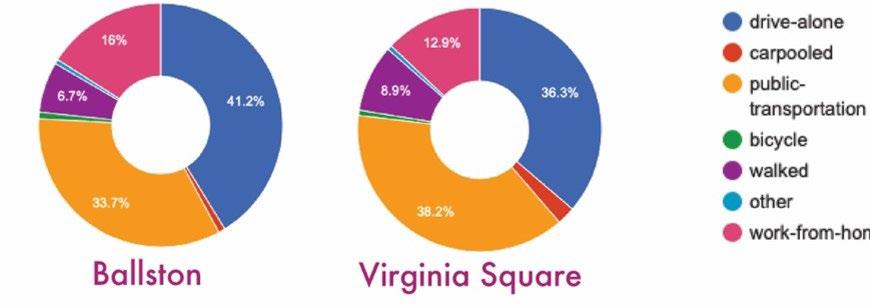

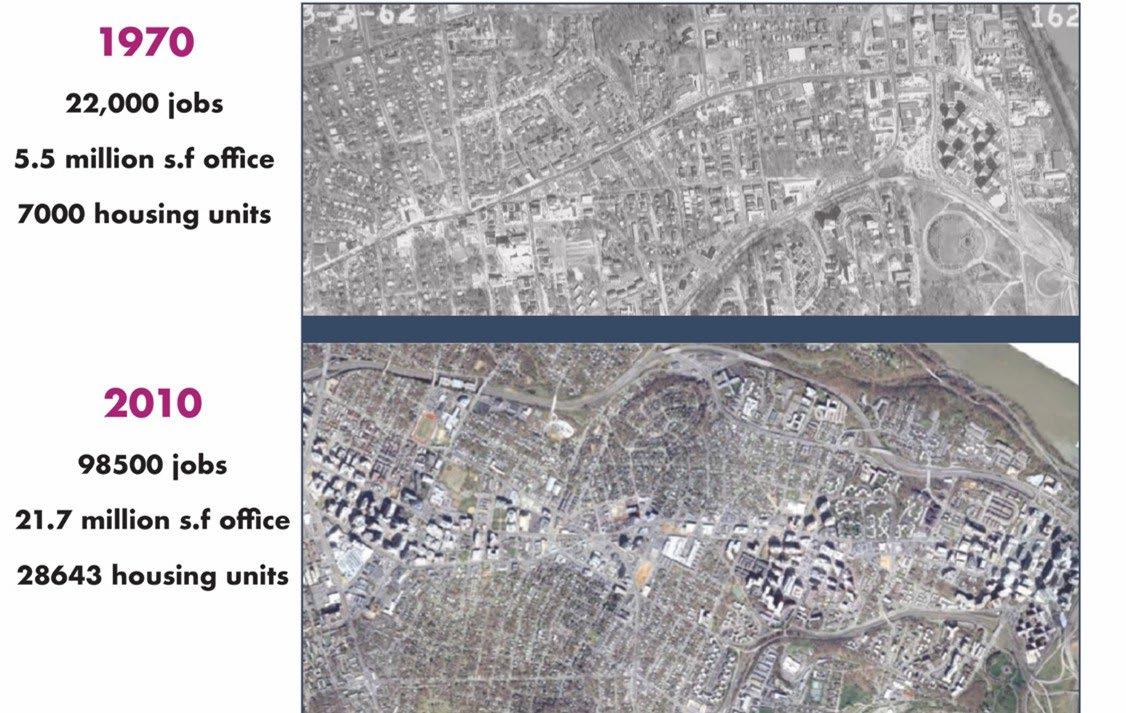
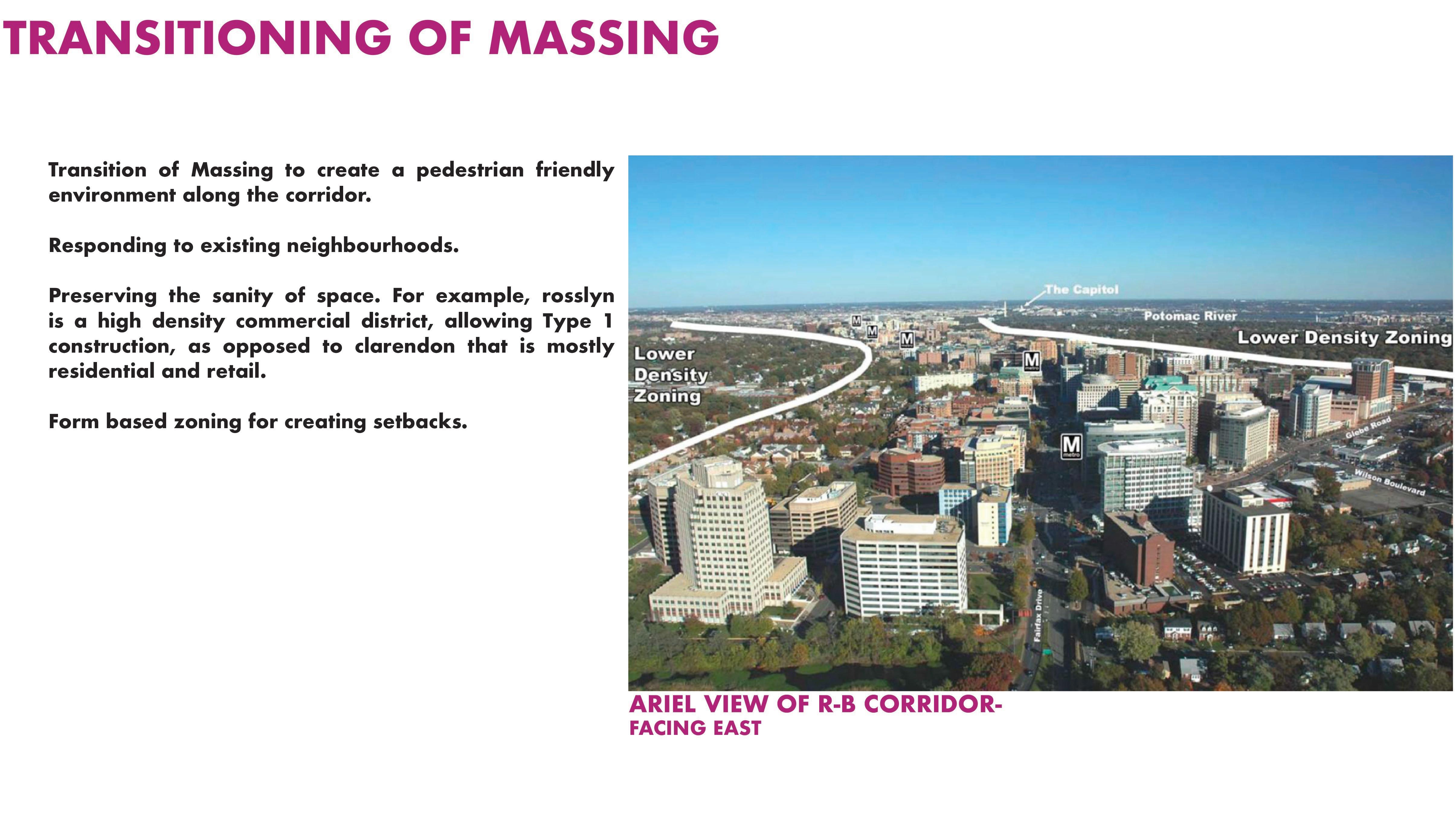

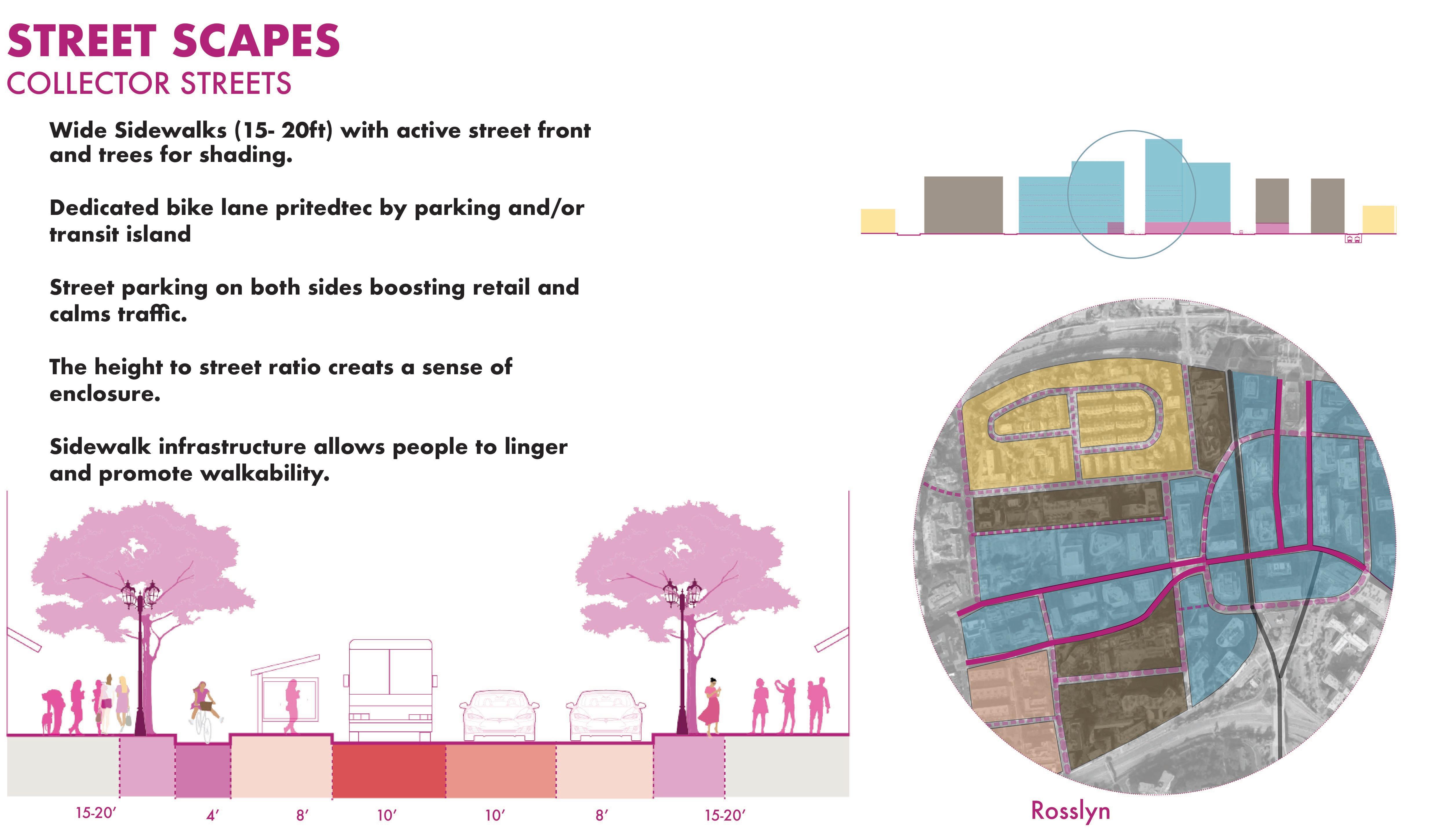





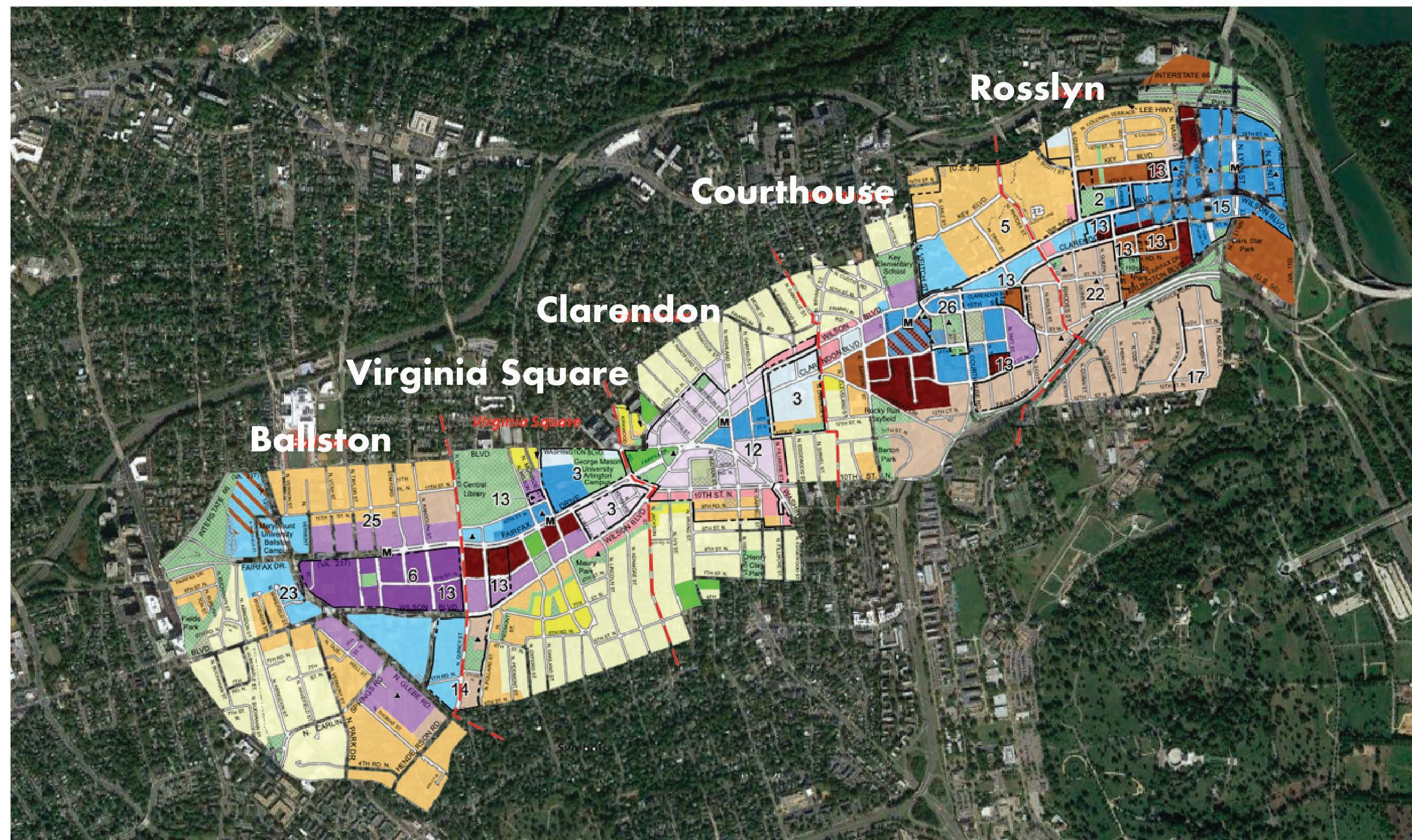

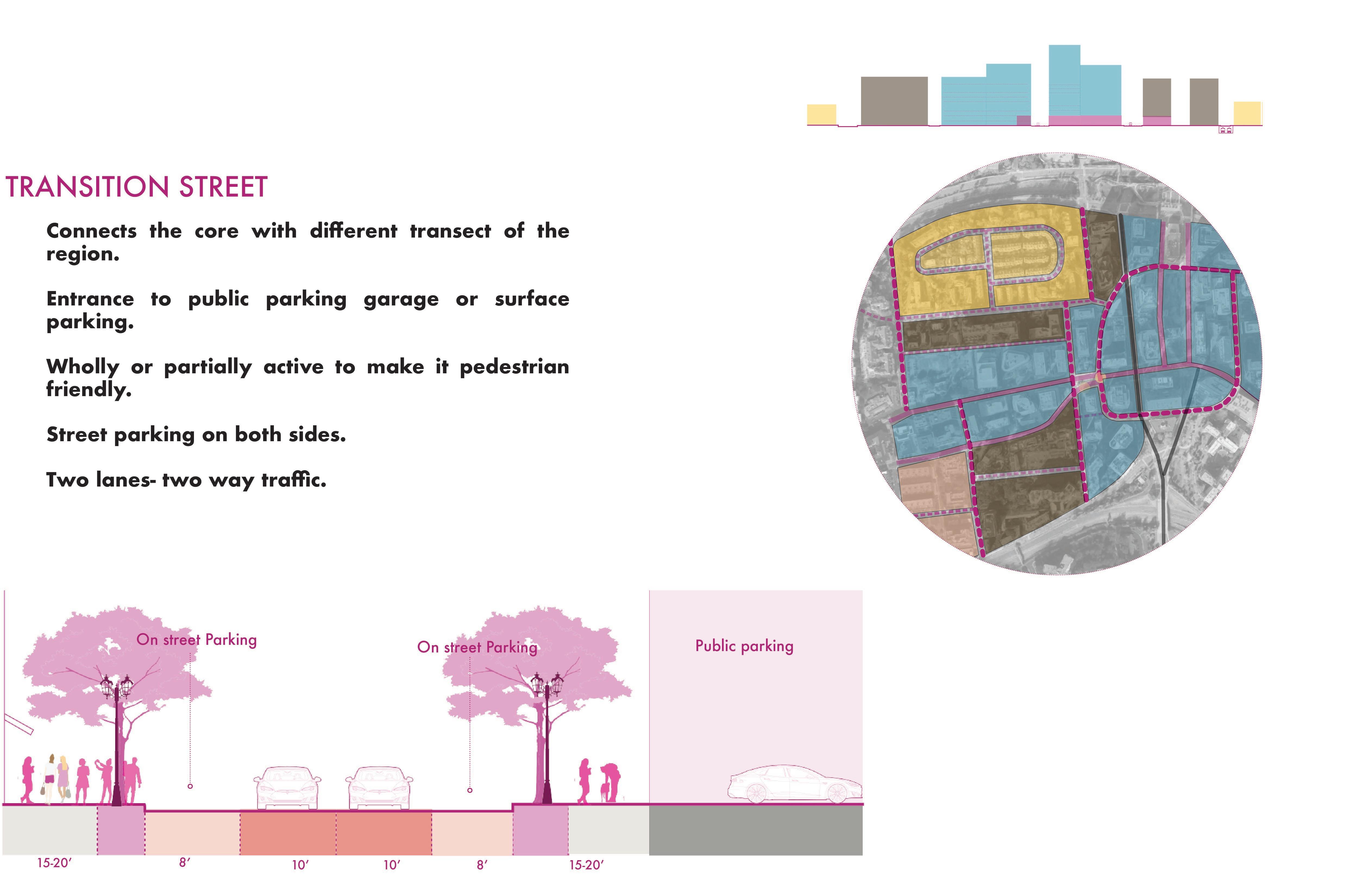
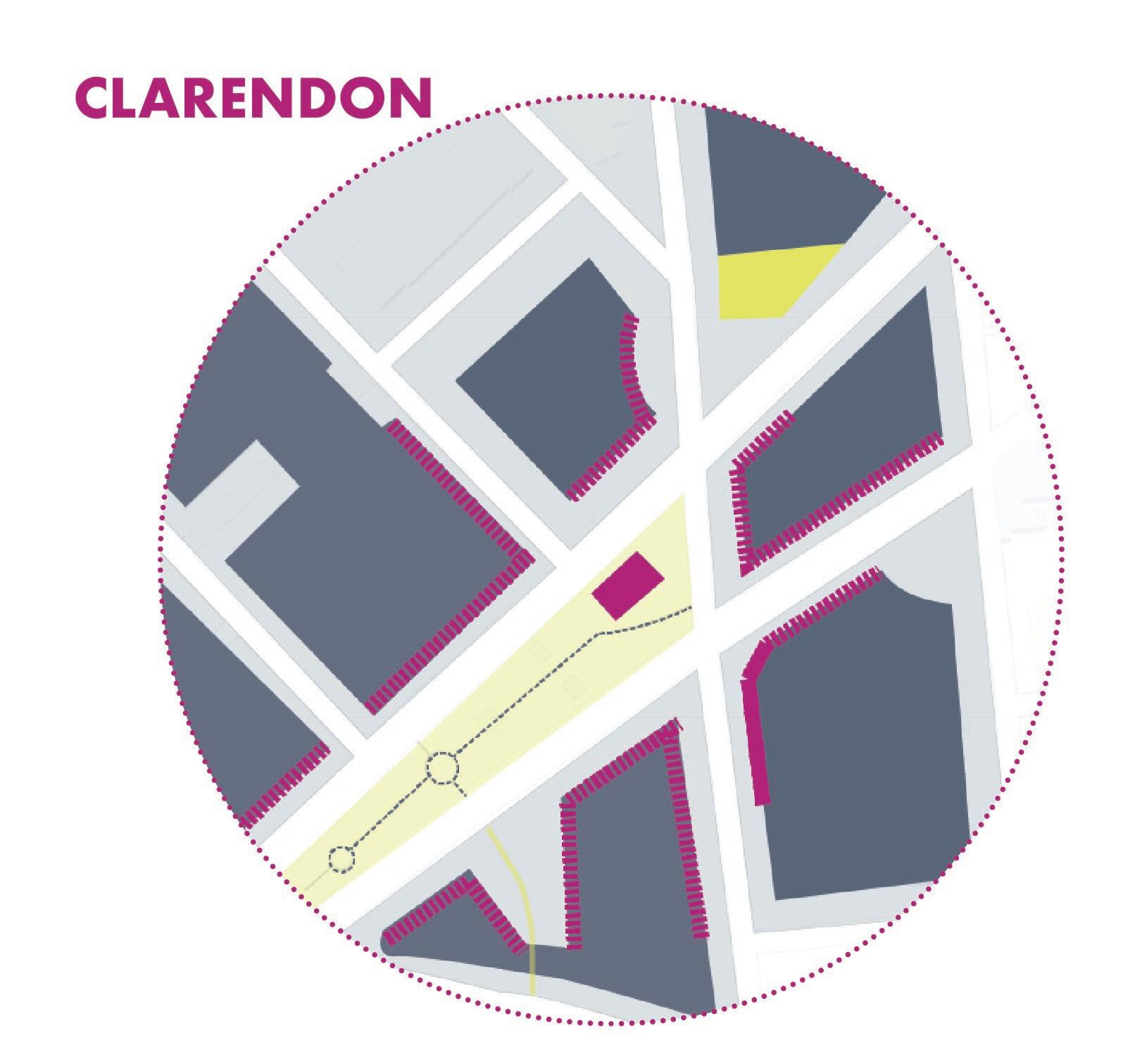

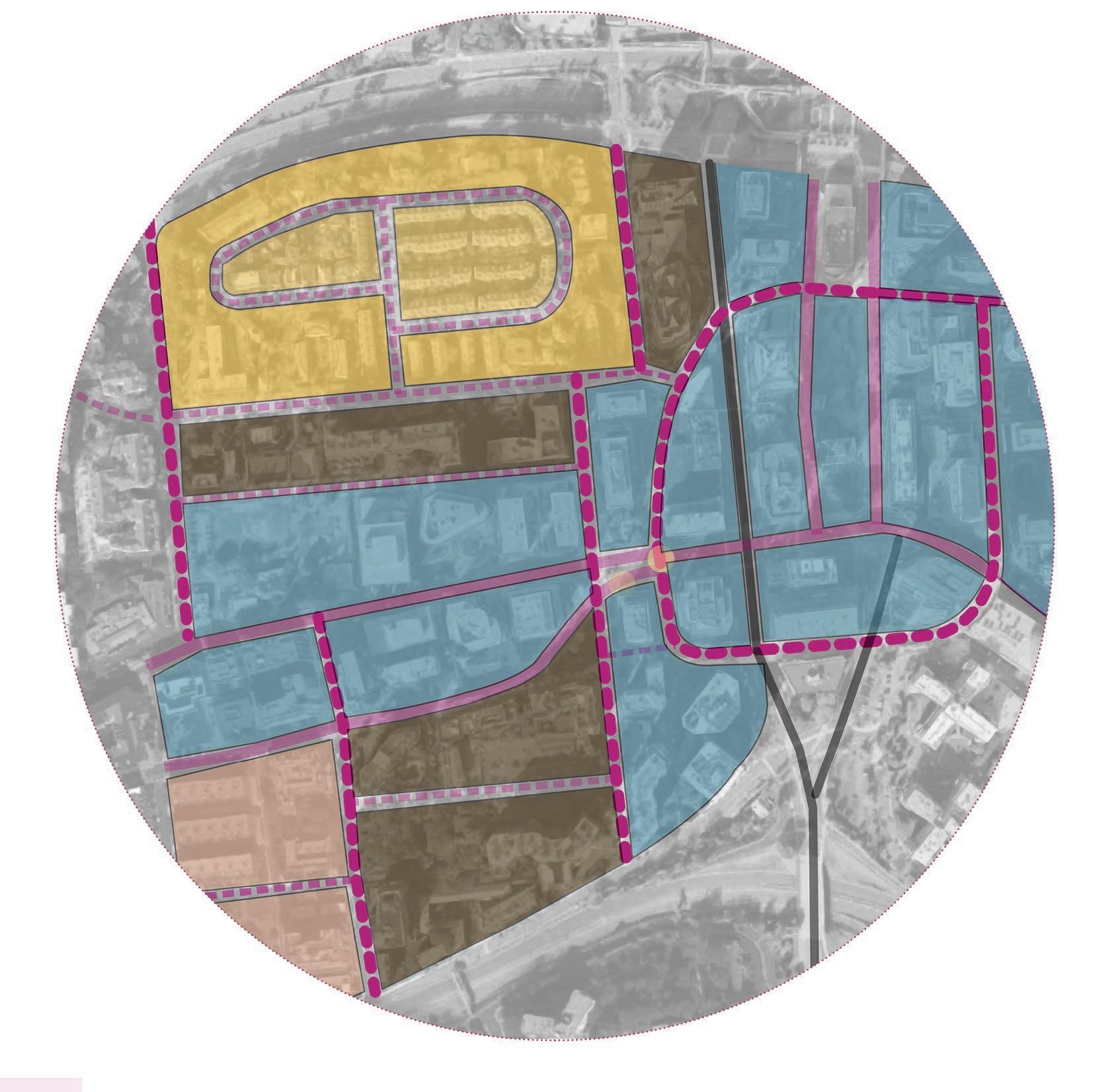


The Pie chart indicates that people within the half-mile radius of the transit station use cars but also majorly use public transport. This validates Lund’s theory of encouraging a pedestrian-friendly environment without discouraging automobiles The Corridor has seen an increase in Jobs and housing since 1970. The transit corridor has successfully created an urban downtown in a predominantly suburban region. The massing along the two boulevards, collector street, is the highest in each station. However, only some stations have followed the same FAR. The transitioning of building heights has been considered in existing neighborhoods Unlike Portland and Newyork, the R-B corridor has no gridiron street network. The corridor previously had commercial automobile shops with parking lots which were up-zoned and subdivided for this development. The county could not propose a rigid street network to preserve existing neighborhoods, creating pedestrian thoroughfares in large blocks. Transit nodes are essential in placemaking as they must be active, attractive, safe, and accessible. As per Calthorpe’s theory, transit stations need not look the same as each node has its characteristics; however, there are some similarities that people can relate to
